Ascension: The island where nothing makes sense
- Published
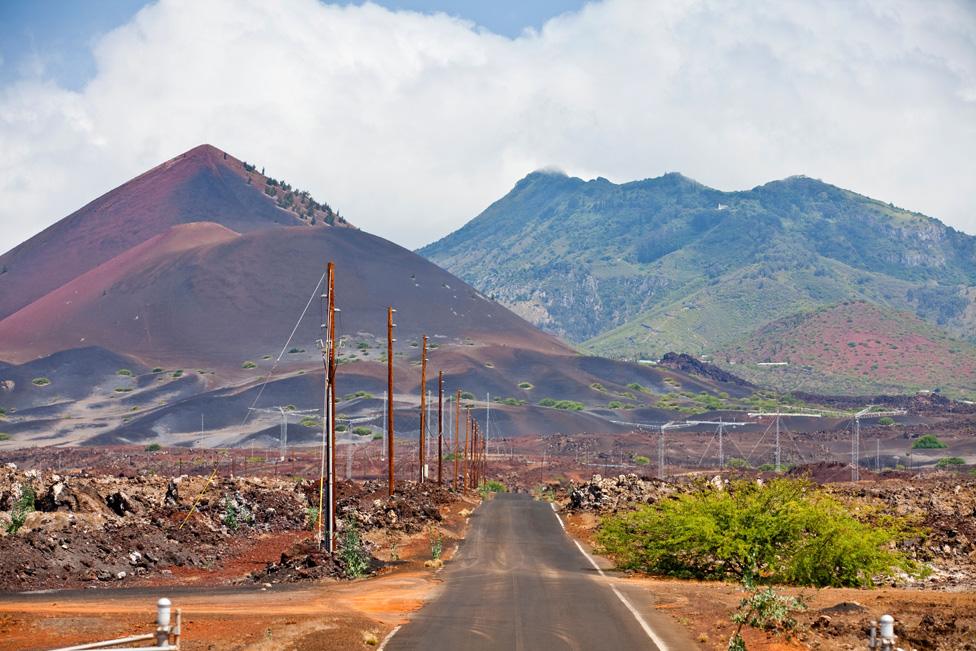
Ascension Island is a tiny dot of green in the tropical mid-Atlantic, a volcanic outpost of empire where it's hot and cold at the same time. It's a place where Charles Darwin helped inspire an alarming change, writes Matthew Teller.
A scrap of British territory marooned in the tropical mid-Atlantic halfway between Brazil and Africa, Ascension is a place of enduring oddity.
Officially, nobody is from there. The UK government denies the right of abode, turning Ascension's 800 or so British citizens - some of whom have lived on the island for decades - into temporary visitors. To enter, you must get the written permission of the Queen's representative, known rather chillingly as the Administrator.
The airport - whose runway was once the longest in the world, designed to accommodate the Space Shuttle - is operated by the US Air Force, which grants limited access to Britain. Nasa tracked the Apollo Moon landings from Ascension. The European Space Agency monitors rocket launches from here.
Hilltops across the island are festooned with aerial arrays and satellite dishes - but who is listening, and to what, nobody is willing to say.
Ascension's bizarre natural environment is the perfect setting for all this strangeness.
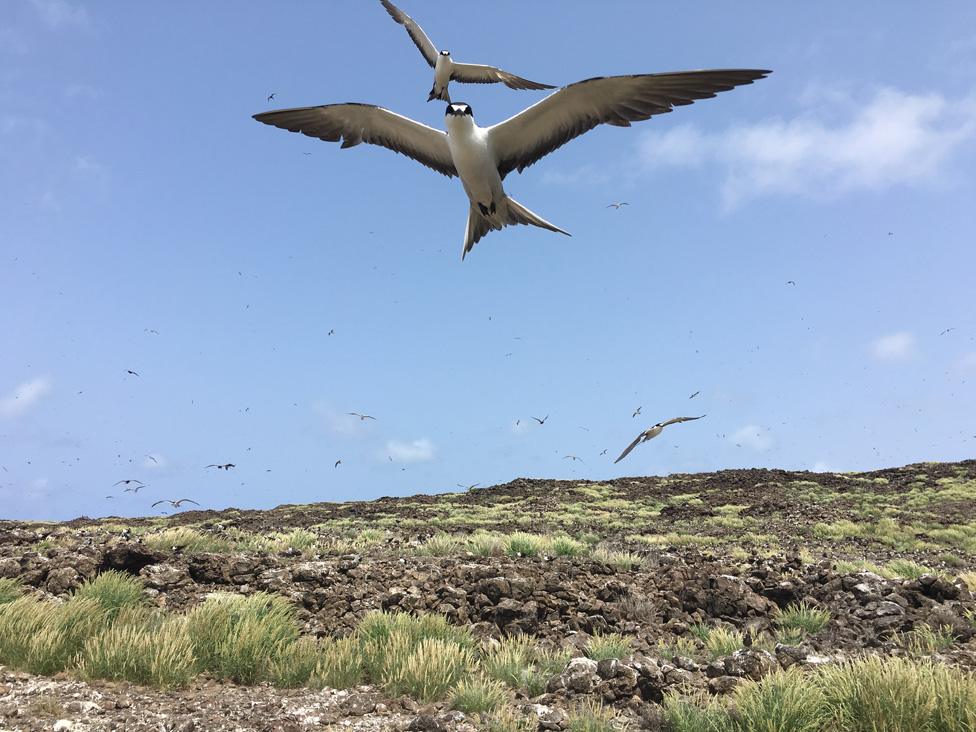
Sooty terns - wideawakes - at the so-called Wideawake Fairs seabird colony
One sweltering afternoon I drove out past Wideawake Airfield, popularly believed to have been named for its role as a late-night refuelling stop for RAF planes flying between the UK and the Falklands.
Down towards the shore, I came nose-to-beak with the real reason for the name - hundreds of thousands of sooty terns, known as "wideawakes" for their constant cawing chatter, echoing ceaselessly day and night across dry lava plains.
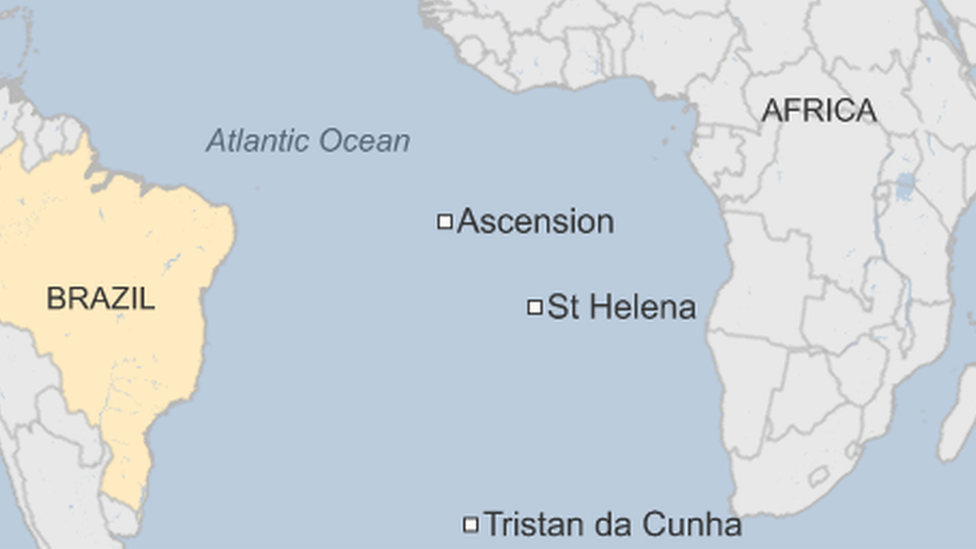
A geological infant, Ascension is the tip of an undersea volcano which rose above the waves only a million years ago. It may still have been erupting as recently as the 16th Century. The pounding Atlantic has barely begun to erode the contorted, charcoal-black lava flows that ring the island's shoreline, looking like they cooled yesterday.
It is roughly the size of Guernsey, and most of it is as hot and dry as a desert. What soil there is, is clinker. Until the British settled in 1815 it was uninhabited. The largest land animal was a variety of land crab. Ships didn't linger.
Yet sailors visiting in 1726 discovered a tent and a diary.

Find out more
Costing The Earth: The Mars of the Mid-Atlantic, presented by Peter Gibbs and produced by Matthew Teller, is on BBC Radio 4 on Tuesday 19 April, at 15:30 BST. It is repeated on Wednesday 20 April at 21:00 BST. You can catch up via the BBC iPlayer.

They turned out to belong to Leendert Hasenbosch, a Dutch mariner who had been set ashore on Ascension the year before as punishment for homosexuality. The diary records Hasenbosch's increasingly desperate search for water and supplies, as he resorted to drinking the blood of turtles and seabirds and, eventually, his own urine.
The poor man's final fate is unknown - no skeleton was ever discovered.
Almost 80 years later, when the British garrisoned Ascension to discourage French attempts at rescuing Napoleon - who had been exiled to St Helena, the nearest point of land, 700 miles southeast - they too could find virtually no fresh water.
"Near the coast, nothing grows," wrote Charles Darwin.
"The island is entirely destitute of trees."
Darwin discussed how to make Ascension more habitable for humans with his friend Joseph Hooker, later director of the Royal Botanic Gardens at Kew, who visited in 1843. Hooker devised a plan.
He would plant trees all over the 859m (2817ft) summit of Green Mountain, Ascension's highest point. Foliage would trap moisture from the warm southeasterly winds that sweep continuously over, letting it drip down to ground level to assure a water supply for the troops. He would introduce grasses to create pasture for livestock, and soil to plant vegetables.
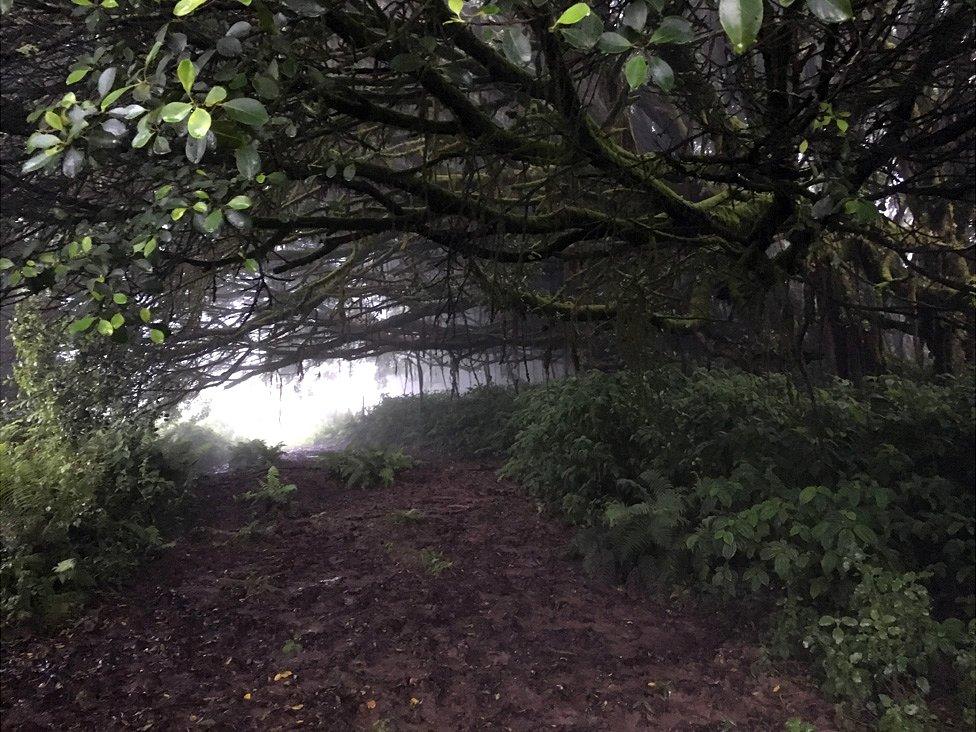
Giant ficus trees with aerial roots, planted on Green Mountain
"As you can see by the vegetation surrounding us, this plan was spectacularly successful," says biologist Dr Sam Weber, standing wreathed in fog amid a mini cloud forest of dripping ficus trees, bamboo, ginger and guava that envelops Green Mountain today. We are a few minutes' drive from the sweltering lava plains, but up here it's mild and breezy.
"Whether he was right is another question. Judged by today's standards, many scientists would argue this is a disaster. On a superficial level it looks like a tropical paradise - it's humid, there's lots of plants - but if you scratch the surface it really doesn't go a lot beyond that. There's none of the complex interrelationships you'd expect in a real tropical cloud forest - and all of the species that were here are vanishing."
They comprise the few fragile grasses that grew on the island before Homo sapiens landed, including the tiny parsley fern, half the length of your little finger. Long thought extinct, it was rediscovered in 2009 clinging to an isolated crag on Green Mountain and after careful propagation at Kew is now being planted out into the wild again.
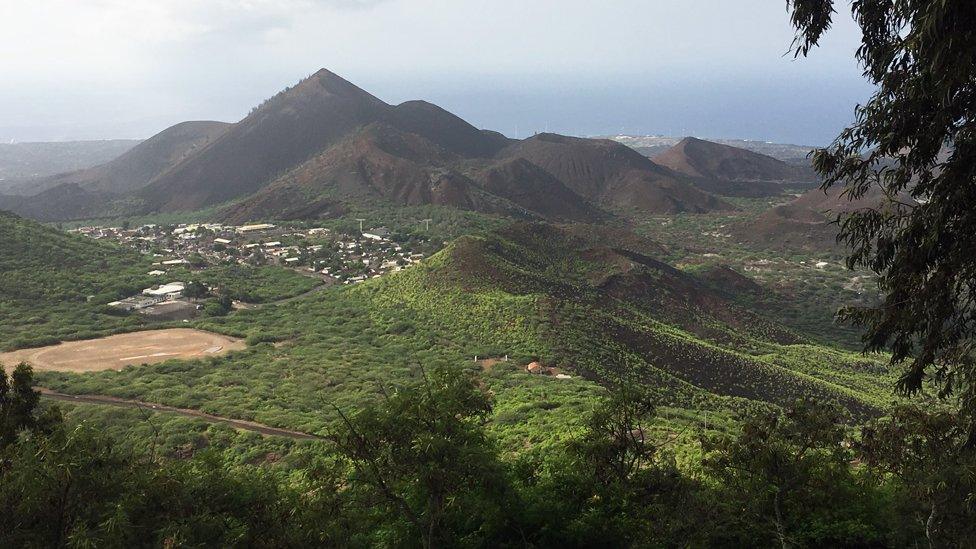
View from Green Mountain across volcanic cinder cones
Hooker, to his credit, knew his planting scheme would push out the endemic ferns. What he perhaps didn't realise was just how much havoc it would cause.
"I don't think we'll ever get to the point we could call Green Mountain a fully functioning ecosystem, at least not in the short term - that would take thousands of years," says Weber.
"At the moment it's a completely unmanaged mess of invasive species - one after another rises to dominance, others die back, those species crowd the footpaths, reducing the value of the mountain for walkers."
And the BBC didn't help. Engineers arrived in the mid-60s to construct transmitters to beam World Service programming to Africa and South America. They built a new village, a few miles inland from the sleepy capital, Georgetown - and planted a type of mesquite, known as Mexican thorn, to bind the dry soil.
Today the dry, stiff-thorned mesquite runs riot, dominating whole swathes of Ascension's terrain.
"A conservative estimate is that there's now about 38,000 of these bushes," says Weber.
"It's very difficult to control physically - it puts down tap roots that can be 20-30m deep - so we're looking at biological methods of control, bringing in pest species that are specific to this shrub from its native range."
This, alongside Weber's work on Green Mountain preserving introduced ficus trees as makeshift habitats for the struggling native ferns, pushes Ascension's oddity into new areas.
Things are too far gone to attempt restoration of the island's degraded environment. Weber's plan now is to use invasive species as part of a broader strategy, aimed at clawing back over the next century or two some of the mayhem sparked by Hooker and Darwin.

Turtle on Ascension Island beach
That long view is extending to the marine environment. For most of the 500 years human beings have been visiting Ascension, turtles have been dinner. Sailors would haul these beasts - which can weigh as much as 250kg - away to their ships and "turn" them, keeping them alive on their backs, sometimes for weeks, before boiling them up for soup.
This "harvesting" ended in the 1930s. But hatchlings take decades to reach maturity before returning to lay eggs on the beach of their birth. Ascension's turtle numbers only started to recover in the 1970s.
"Since then we've seen an incredible recovery in sea turtle numbers," says Ascension's Director of Conservation Dr Nicola Weber.
"We're really just now seeing the positive effects the stopping of the harvesting has had."
In that context, being showered with sand from a turtle's careless flipper - as I was - feels like a privilege.
Costing The Earth: The Mars of the Mid-Atlantic, presented by Peter Gibbs and produced by Matthew Teller, is on BBC Radio 4 on Tuesday 19 April, at 15:30 BST. It is repeated on Wednesday 20 April at 21:00 BST. You can catch up via the BBC iPlayer.
Follow Matthew Teller on Twitter @matthewteller, external
Subscribe to the BBC News Magazine's email newsletter to get articles sent to your inbox.